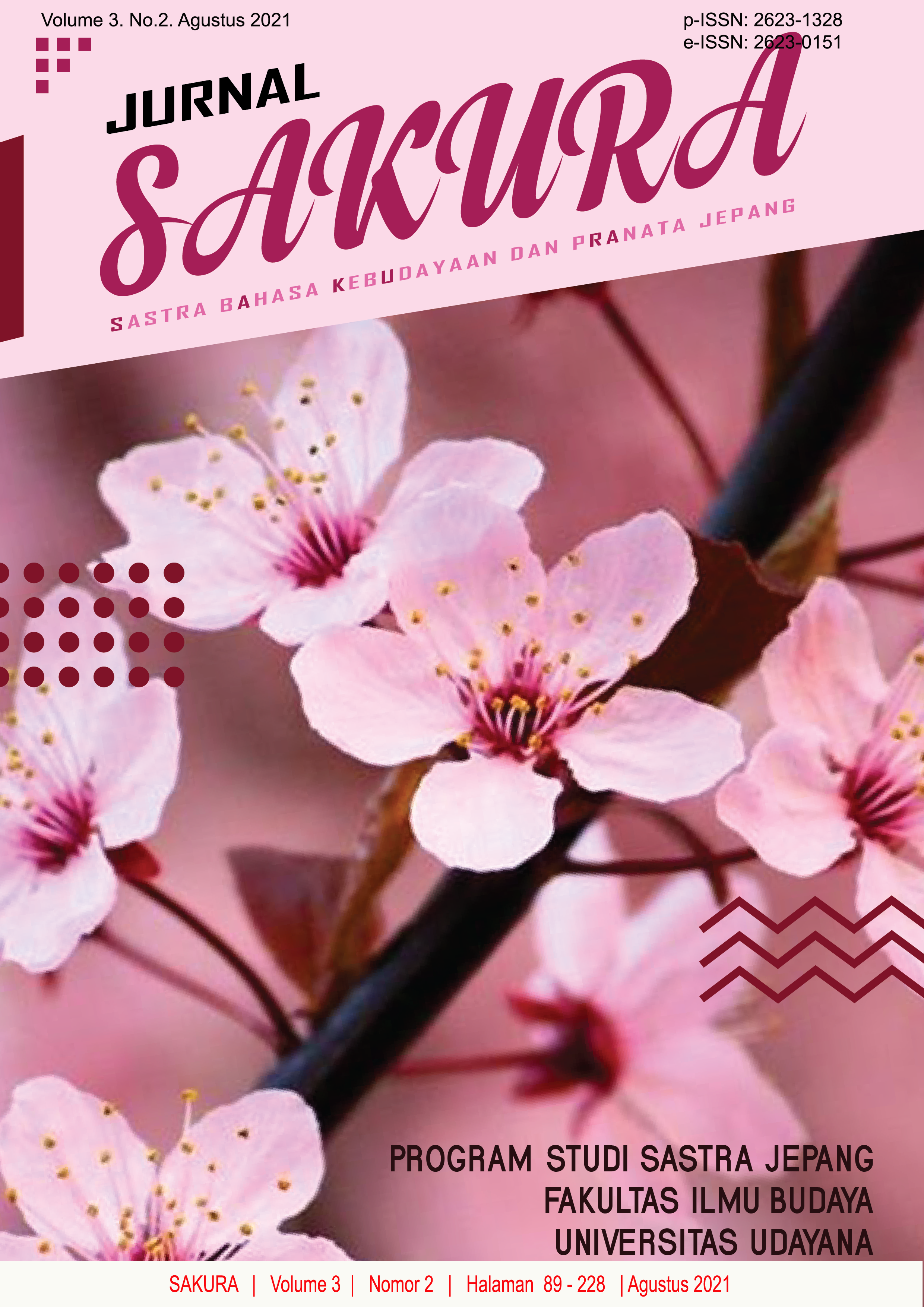Jurnal Budaya Aisatsu dan Ojigi (Studi Fenomenologi Budaya Komunikasi Pada Pekerja Hotel Kyuukamura Kishu Kada)
Abstract
The purpose of the study was to find out about the communication culture of Japanese society, namely verbal Aisatsu and non-verbal Ojigi communication practiced by hotel workers Kyuukamura Kishu Kada using phenomenology studies. This research is a qualitative descriptive study using interview techniques as a data collection technique. There are 5 informants from this research. The results found in this study are the Aisatsu verbal communication culture practiced by Kyuukamura Kishu Kada workers varies depending on the interlocutor and the situation. For non-verbal culture, Ojigi is done to show apologies, thanks, and respect for the other person. The more bent in doing Ojigi, the feelings shown are getting deeper. Employees at Kyuukamura Kishu Kada also realize that Aisatsu and Ojigi are very important Japanese communication culture and play an important role, especially in Kyuukamura Kishu Kada.
Downloads
References
Crystal, D. 1992. An Encyclopaedic Dictionary of Language and Languages. Oxford: Blackwell Publishers.
Haga, Y. et al. 1988. Gengoseikatsu. In Kindaichi, H., Hayashi, O. & Shibata, T. (edds), Nihongohyakkajiten (An Encyclopaedia of the Japanese Language). Tokyo: Taishukan Publishing Company.
Ide, R. 1998. Sorry for your kindness‟: Japanese interactional ritual in public discourse. Journal of Pragmatics 29. 509 – 529.
Ide, R. 2007. Aisatsu. Handbook of Pragmatics Online. John Benjamins Publishing Company.
Koichi. 2010. Bowing in Japan (Japanese Etiquette). Diakses dari http://www.tofugu.com/2010/07/12/bowing-in-japanjapanese-etiquette/# pada tanggal 6 Juni 2021.
Moleong, Lexy J. 2015. Metodologi Penelitian Kualitatif. Bandung: Rosdakarya.
Okuyama, M. et al. (1981). Aisatsu to kotoba. Kotoba shiriizu 14. Tokyo: Henshuu Bunkachou.
Rosana, Ellya. 2017. “Dinamisasi Kebudayaan Dalam Realitas Sosial”. Jurnal. Fakultas Usluhuddin Dan Studi Agama UIN Raden Intan Lampung.
Roza, Ilvan. 2012. “Ojigi sebagai Alat Komunikasi”. Artikel dalam Jurnal Bahasa dan Seni Vol.13 No.1 Tahun 2012, Fakultas Bahasa dan Seni Universitas Negeri Padang.
Suzuki, T. 1981. Aisatsu to kotoba. Kotoba shiriizu 14. Tokyo: Henshuu Bunkachou.
Tubbs, Stewart L. dan Sylvia Moss. 1996. Human Communication:Konteks-konteks Komunikasi. Bandung. Remaja Rosdakarya.













